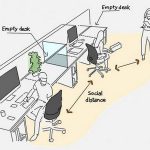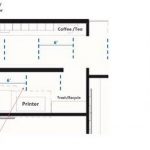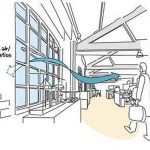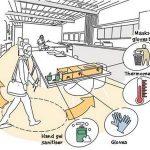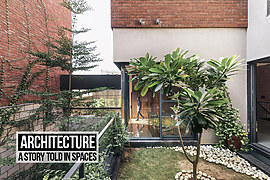‘History repeats itself’, may it be fashion, drama, music, art or anything of the sort. The repetition & the revival of the quondam have been inevitable let alone be a constant source of inspiration for designers, artists, and likewise.
The notion also stands true in the design industry that has been evolving ever since. Over the past few years, there has been a revolution in office space design. The individual cubicles that divided office environments changed into an open plan. The size of individual workstations has shrunk. Typical workstation is 36 square feet instead of 48 square feet – a 25 percent reduction. Individual space has decreased while there has been a considerable increase in amenities and shared spaces.
Most of the design modules had adopted designs that encourage employee movement and Adhoc spaces. Pantry, gyms, and recreation spaces were among shared spaces.
To name a few advantages, an open office can accommodate more density and promotes collaboration but it owes certain drawbacks in the prevailing Covid-19 situation. The challenge is clear. Workplaces must adapt from open-plan workplace to de-densification.
The adoption of coworking environments may no longer attract the flocks of people like in the past. The new normal trends in Corporate Interiors are-
1. Six-feet distance rule: It recommends workstation spaced out six-feet apart. A visually displayed and unique routing for each space promoting less contact.

- Shrinking footprints: Flexible working arrangements that allow rotation of work in-office days with work-from-home days during the week, and some roles or departments may become permanently home-based.

- Designing for resilience: Movable walls or partitions to redesign the spaces in a way that fills the current needs but can be converted again as things change. Conference rooms, break rooms, training facilities, and other areas could be repurposed or reconfigured to give employees more personal workspace in their current square footage.

- Partition required/ barrier screens to fit around desks: Designating separate, quiet, and private rooms will keep the people at the required distance from each other. The flexible partitions and barriers at each workstation to maintain social distancing is the need of the hour.

- Suspension of agile working & alternate desks: Hot Desking or sharing of one desk by multiple workers should be condemned or if needed the provision of disposable paper desk pads, on which a worker can set a laptop or keyboard and mouse should be provided.
- Improved air quality and introduction of filters made necessary: The contribution of indoor air systems to control the spread of pathogens will be heightened. For instance, the use of Ultraviolet germicidal irradiation, lighting fixtures retrofitted with lamps emitting narrow spectrum light, which provides the disinfecting benefits of UV lighting will be increased.
- Older buildings that offer operational windows may be more desirable to allow occupants better access to outside air: Buildings will face increased pressure for mechanical filtration and maintenance as well as the design of systems that incorporate increased fresh air intake to reduce the amount of re-circulated air within the office space. Older buildings that offer operational windows may be more desirable to allow occupants better access to the outside air.

- Automation to limit skin contact: IWMS systems can be integrated with people’s mobile phones to allow them to book space or perform other normal functions without touching the public surface. Objects like soap dispensers, hand sanitizers, and coffee dispensers can undertake touchless technology.

- Antimicrobial material that is bleach cleanable & disinfected: Such as electrostatic, UV-C (ultraviolet light treatment), and microfiber mops. Copper can kill off SARS-CoV-2 pathogens, and this is an option that can be used in a variety of fixtures and finishes. Also, anti-microbial paint which can kill common pathogens such as staph, MRSA, and E. coli up to four years after application should be employed in the interiors. Introduction of hand sanitizing, temperature measurement provision at the entrance are some of the precautions to take to minimize the risk of reinfections in the office environment.

- Digital tools & technology for a distanced workplace: Video conferencing can host video calls for small and large groups that keep people in touch.
Needless to say, to mitigate the spread of infectious disease, there is no silver-bullet solution or perfect working environment. With the introduction of the pandemic, it is no longer enough to create workplaces that work. Wellness is becoming top of mind and corporate interiors need to live their values in new and meaningful ways. For example, ‘WELL’ has also introduced a study on this that provides a different set of tools than just a desk and a computer. It supports and advocates the holistic wellbeing of the workers. The pandemic has led to the sea changes in design and therefore, tailoring of the workplace needs to be more resilient for corporate offices in the future.




